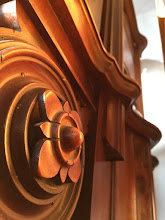Even though it is a hybrid (and not an heirloom), it is probably the best all-around carrot for taste and sweetness (hence the name). What people expect a carrot to look like.
NANTES type carrot.
'Nantes' variety of carrot, can be identified by it's shape. Good all-around taste and sweetness.
Heritage style variety with crisp carrot taste, not too sweet. Can taste a bit bitter when stored for a while - best eaten in the fall.

Royal Chantenay (open-pollinated)
Wide, tapered carrots, but without the woody core you'd expect in a carrot of this nature. Very crisp, good keeper.
DANVERS type carrot. Good for freezing and canning. Popular for juicing due to its darker colour and shape. Well suited for bunching* and winter storage. Royal Chantenay is one of the best for storing in a cellar or at cool temperatures. [>] Excellent for heavy, clay dominated, shallow soils.
*"...a bunching carrot is a carrot that can be sown early, not thinned, can be picked in a bunch, matures quickly and is best suited to eating raw, unpeeled in salads etc Sow little and often for a succession!" [>]
 Nevada (hybrid)
Nevada (hybrid)Nice dark-orange carrot with intense carrot flavour and minimal cores (even texture).
Tops are well attached and Alternaria tolerant. [>] Alternaria is one of many potential carrot diseases.
 Touchon (open-pollinated heirloom)
Touchon (open-pollinated heirloom)Another Nantes-type carrot with even cylindrical shape. Good keeper, especially for sweetness (as with most Nantes varieties). Easy to pull!
A single hybrid, not a mixture of varieties, therefore the carrots are uniform in size and appearance. [>]
DANVERS type carrot. Good sweetness. F1 hybrid.
 Purple Haze (hybrid)
Purple Haze (hybrid)Long thin carrots, with purple flesh that turn orange when cooked, and your water blue! Not too sweet, but nice carrot flavour. Best eaten in the fall.
NANTES type carrot. High yields. [>]
Some extra advice from my cousin: "...carrots need lots and lots of water; do not add fertilizer while they are growing (unless your soil is really depleted - and of course it should be organic). [We] made the mistake of adding some almost-fresh manure to the area where the Berlicummer's were growing and they really really did not like that...the manure stole too much nitrogen out of the soil while decomposing and they didn't grow very big. Grow and learn is the moral of the story!"
Some links with more interesting info on carrots includes:










1 comment:
Great piece on the wide variety of carrots avaiable these days. Many do not realise how beutiful they are and how nutritionally beneficial.
Could you send me good quality version of those photos as I am sure they would look good in the World Carrot Museum.
Thanks, John - www.carrotmuseum.com
Post a Comment